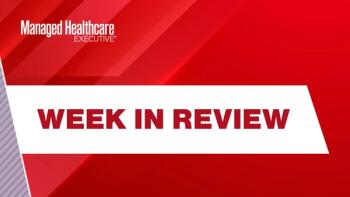
New Transparency Rules Mean Health Plans, PBMs Must Disclose Their Accumulators, Maximizer Programs
John “Jack” S. Linehan, a lawyer at Epstein Becker Green, is featured in the first part of a two-part video series on copay accumulators and maximizers.
Coupon accumulators have been controversial for many reasons, but one of them is the element of surprise. Plan members use coupons to cover their copays and out-of-pocket costs. The savings may be a huge relief, but members haven’t always realized that because their health plan or its PBM was using an accumulator, the value of the coupon not counting toward the deductible. The shock comes when the value of the coupon runs out.
“You could get all the way to May and June and you are getting a drug and everything is fine and, boom, you are hit with the deductible. If you can’t pay deductible, you are not getting coverage for that drug,” said John “Jack” S. Linehan, a lawyer at Epstein Becker Green, in an interview with Managed Healthcare Executive.® On the other hand, Linehan noted that health plans and PBMs have defended accumulators as a way to enforce cost-sharing requirements that are designed to manage costs adn promote economical drug utilization.
The interview was accompanied by Linehan’s article “New state copay accumulators complicate the coupon compliance landscape,” which was posted on the MHE website this week. In the video interview, Linehan surveys some of the recent legal developments that would affect the administration of the copay accumulators and maximizers that health plans and PBMs use to blunt the effect of drug manufacturer coupon programs.
Linehan, a legal expert on the coupon accumulators and maximizers, says new transparency rules for health plans issued by CMS in October include a provision that, effectively, requires health plans and PBMs to disclose to their beneficiaries that they are using accumulators or maximizers.
Most large, sophisticated plans and PBMs already do, according to Linehan. Still, he said he sees the new rule as a significant step: “It does create, for the first time, a bright-line disclosure rule.”
“New plans, smaller plans, employer groups and so forth that are starting to use these mechanisms (accumulators and maximizers) should be on notice that they need to properly disclose that they are using these programs,” Linehan continued.
Linehan also sketched the federal government’s role in regulating accumulators and maximizers.
First, anti-kickback statutes prohibit Medicare or Medicaid beneficiaries from using drug coupon, so all the push-and-pull over coupons and the copay accumulators and maximizers concerns that private payers not public ones.
Second, CMS has been inconsistent. According to Linehan, the agency took steps to restrict the use of accumulators and maximizers in 2019 but then reversed course in May 2020. “You have really seen a trend at the federal level to pulling back on any sort of rules that would micromanage in this space,” Linehan told MHE. Partly as a result, some states have stepped in and curbed the use of accumulators and maximizers.
Linehan said that while coupons increase access to certain expensive medications by making them more affordable, health plans and PBMs argue that their job is to manage costs through plan design, including deductibles — and that the coupons undermine those efforts.
What health plans and PBMs are able to do with accumulators and maximizers is “really leverage the value, not just of the coupon itself, but also still holding the beneficiary responsible for the deductible,” he noted.
Maximizers, which even out the value of the coupon over the entire year, are catching on, says Linehan.
“With maximizers you don’t see this sort of situation where halfway through the year a beneficiaries suddenly have to pay the deductible, “Linehan said. “There has been a trend toward going a little bit more toward the maximizers because they are not as controversial.”
Newsletter
Get the latest industry news, event updates, and more from Managed healthcare Executive.





















































